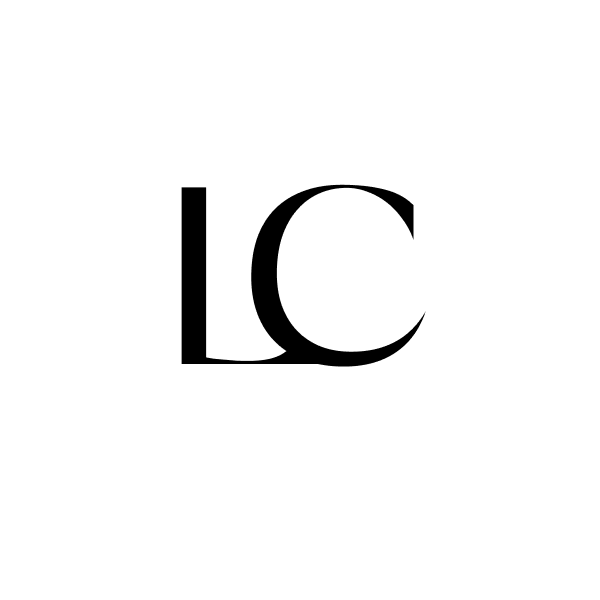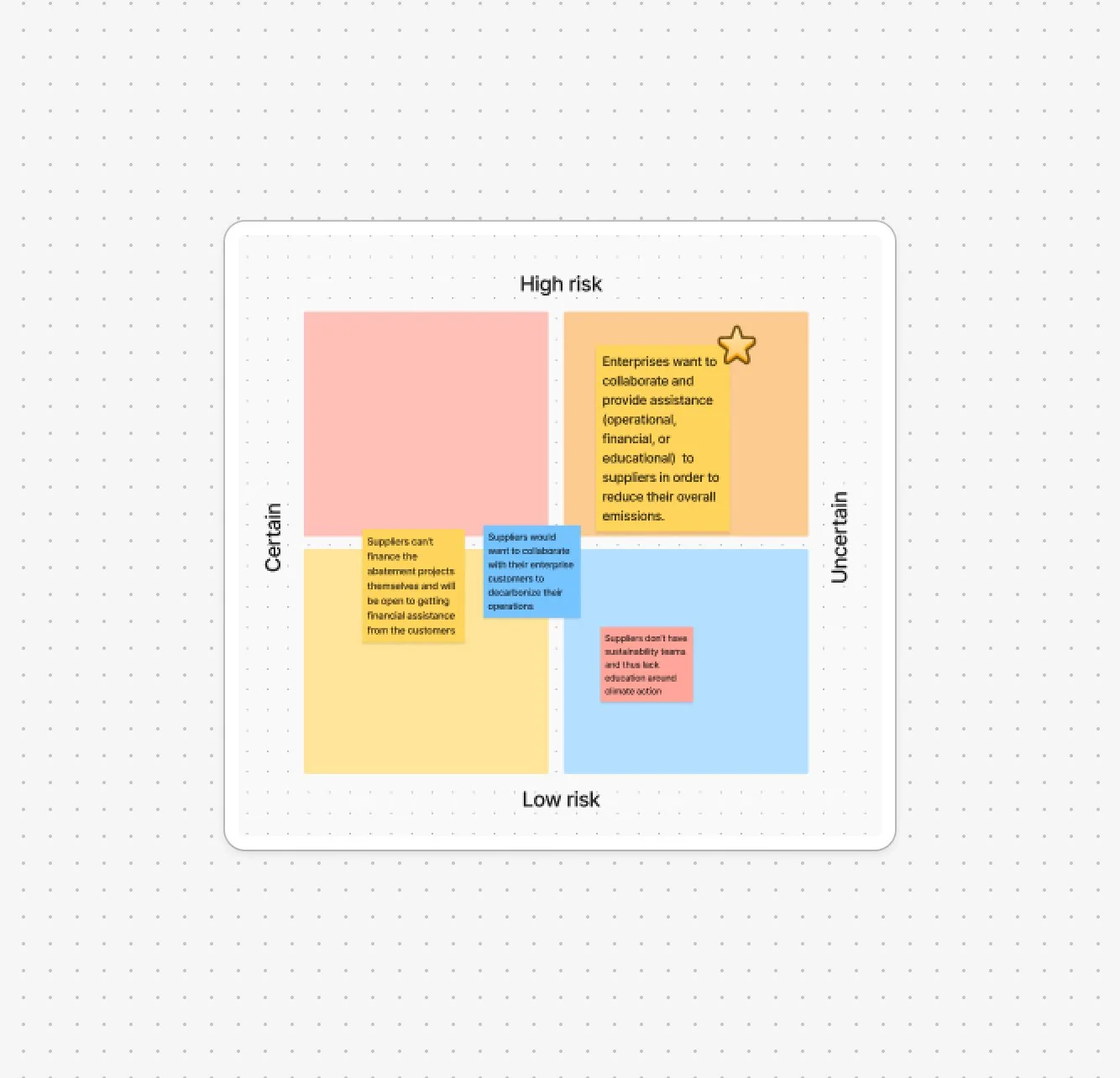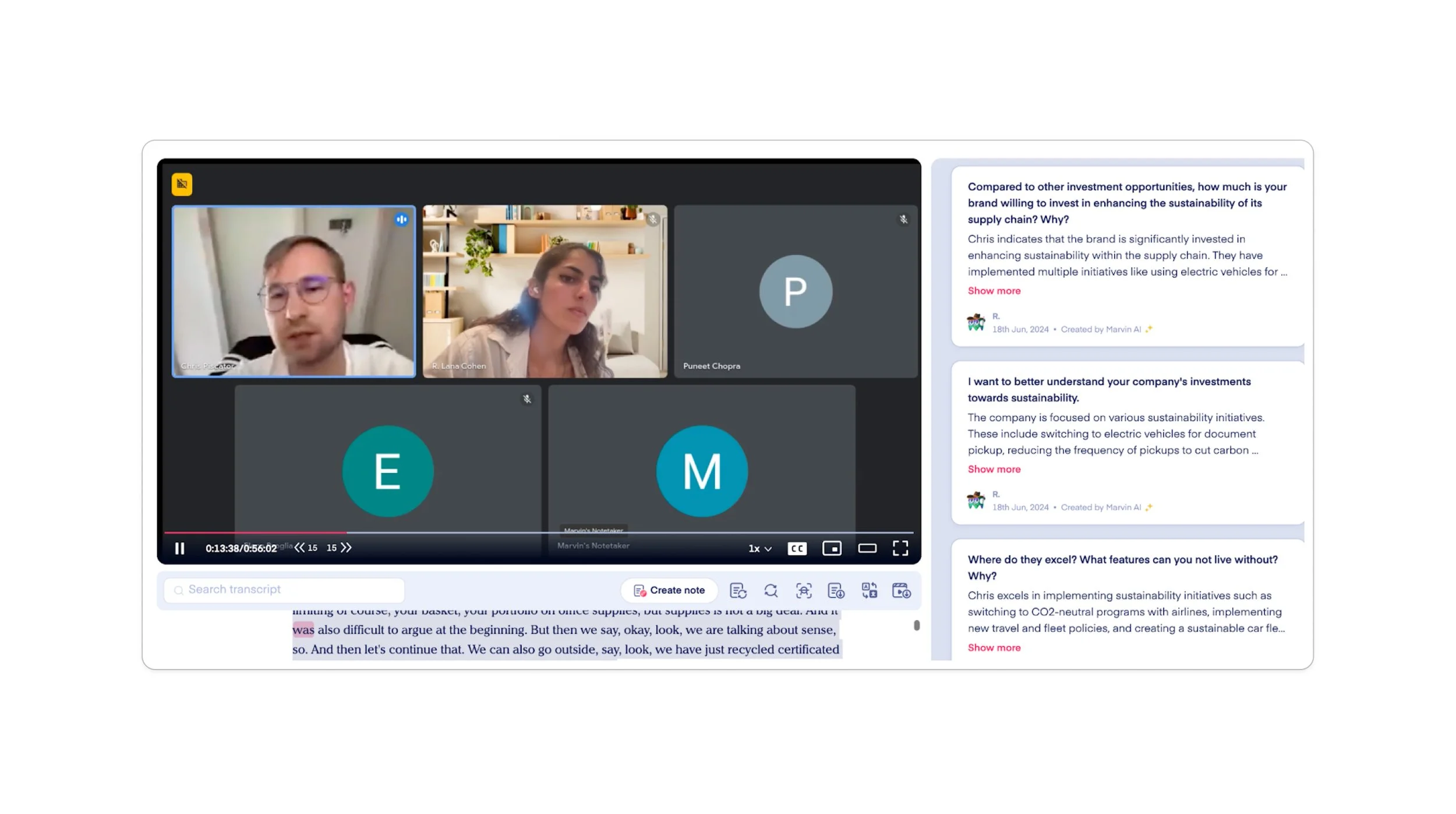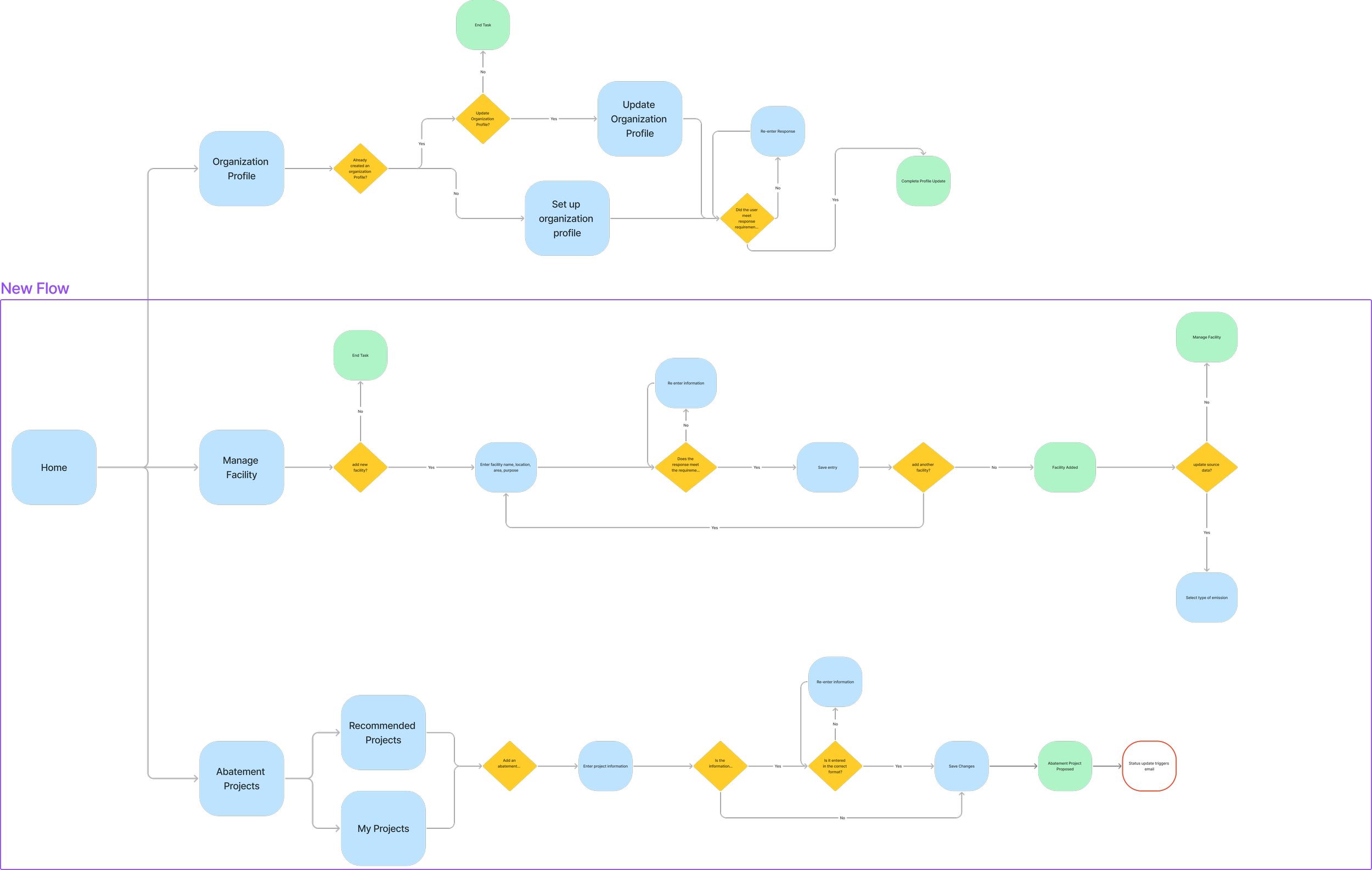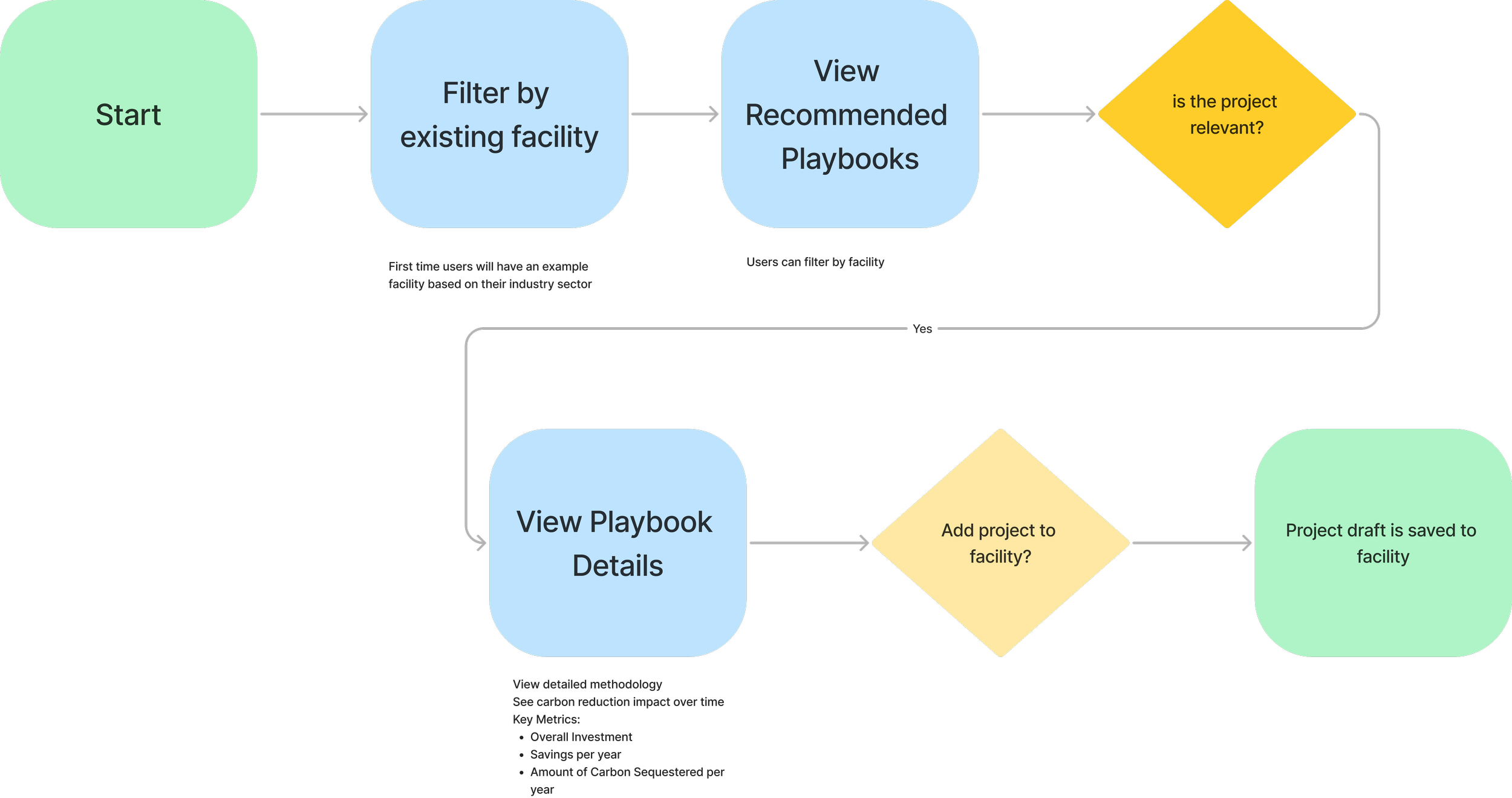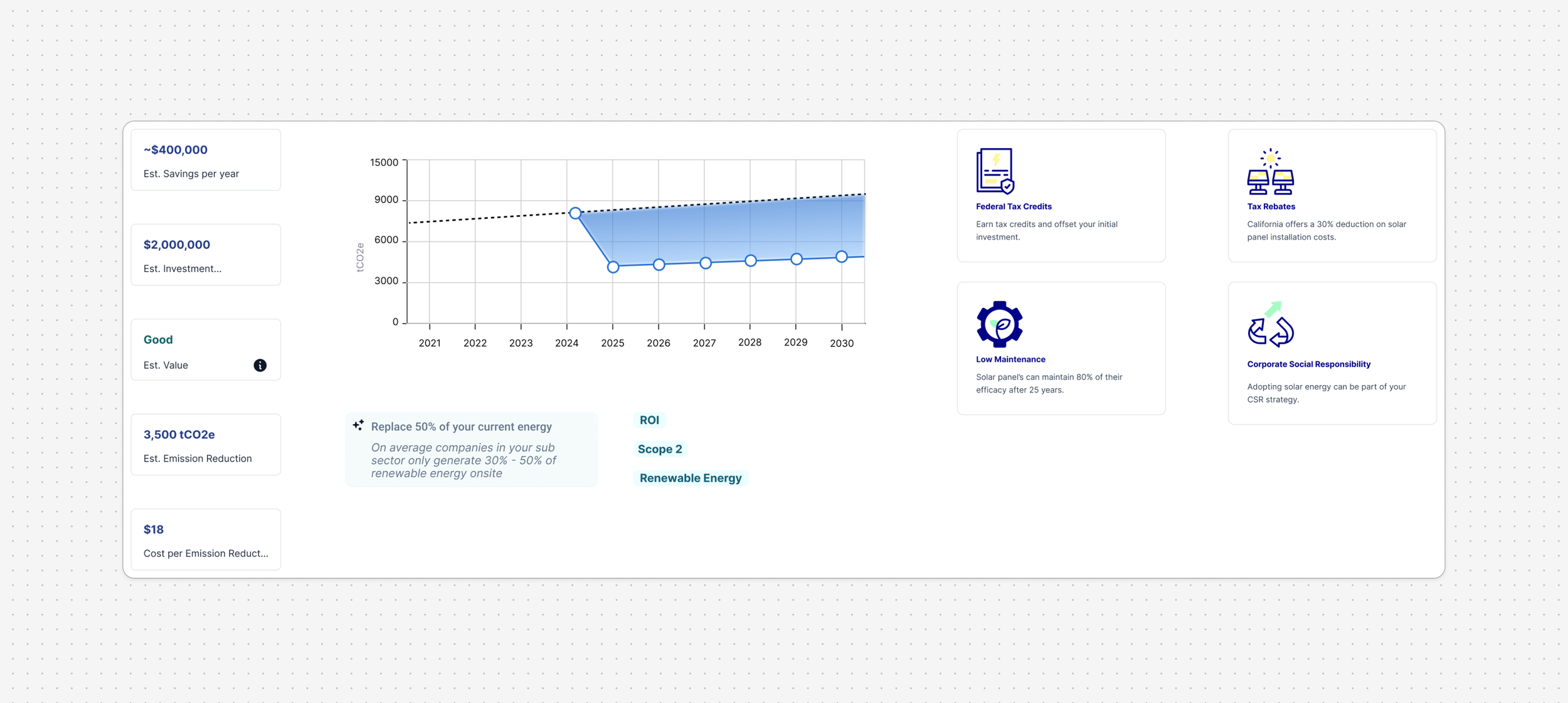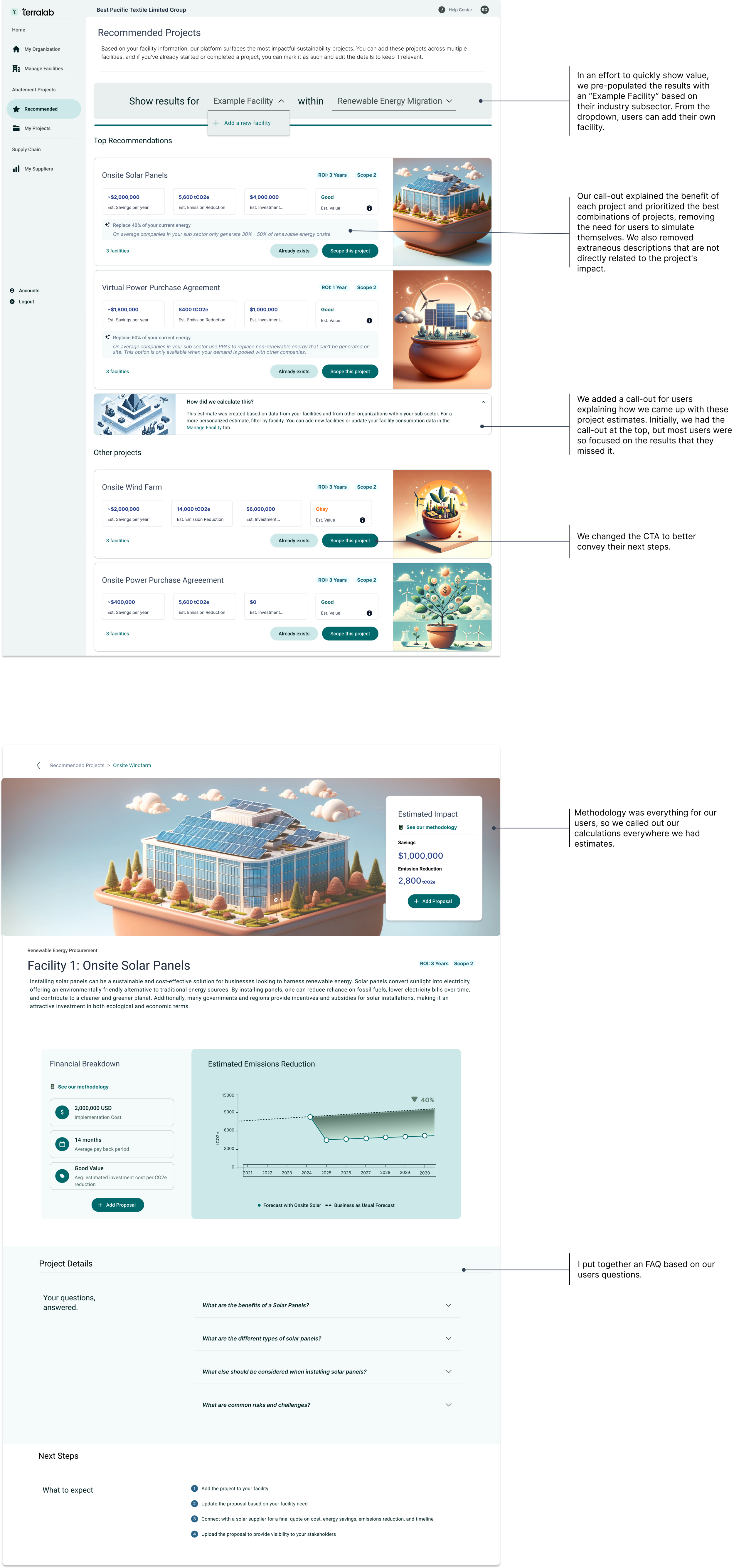Re-designing for Enterprise Sustainability
My Role
Lead UX Researcher + Product Designer
Responsibilities
Research, Synthesis, Ideation, Design
Timeline
5 months
Terralab’s AI platform identifies the most financially viable and impactful carbon reduction projects for enterprise companies and their suppliers.
They have two main users:
Enterprise Sustainability Managers, who are responsible for creating initiatives aimed at reducing their carbon emissions
Supplier Operations Leaders, while not solely focused on sustainability, often take on carbon reduction projects either within their organization or in collaboration with clients.
THE PROBLEM
Terralab's initial MVP competed in a crowded market, solving the problem of measuring carbon emissions. The founders wanted to pivot, and with their new AI feature, TerraGPT, they wanted to move away from measuring emissions and tackle reducing Scope 3 emissions (i.e. emissions generated from a company's supply chain).
The Goal
Our goal was to gain a deeper understanding of our two primary users and design a solution to help them scale their decarbonization efforts.
FOUNDATIONAL RESEARCH
Tackling the risk head-on
Working closely with the Lead PM, I set up an assumptions mapping exercise to understand their riskiest assumptions, AKA the assumptions that will make or break the business.
Enterprises want to collaborate and provide assistance (operational, financial, or educational) to suppliers in order to reduce their overall emissions.
Understanding the market
I conducted market research to understand the landscape, current challenges, and approaches that already exist in this space.
User Interviews
I ran 10 in-depth interviews with Sustainability Managers and Suppliers in different industries to understand their approaches, challenges, and tools for reducing supply chain emissions.
SYNTHESIS
Raw recordings from the session were collected in HeyMarvin and tagged by user type, behaviors, pain points, and tools. These tags allowed me to easily surface common needs, frequent pain points, and gaps within their existing workflow.
INSIGHTS
Suppliers
They don’t know where to begin
Suppliers struggle to identify the most relevant and profitable opportunities because they lack the expertise, resources, or funding.
Enterprise
Their supply chain is a black box
They struggle to identify the right supplier to work with because they don’t have visibility into their suppliers' sustainability projects.
OPPORTUNITY
Now that we better understand our users, we can focus our efforts on their biggest challenges.
By providing visibility into their supply chain, Enterprise companies can identify opportunities, invest in projects that will collectively reduce their emissions, and provide suppliers with the resources they lack.
Product Strategy
Terralab’s mission is to help companies decarbonize their supply chain by surfacing carbon reduction initiatives.
We wanted to show Enterprises what opportunities lie within their supply chain, but we first needed to get their suppliers onto the platform by helping them kickstart their decarbonization efforts.
Problem Statement
How might we help suppliers identify and invest in the most impactful decarbonization projects?
EVALUATING THE CURRENT EXPERIENCE
I did a competitive analysis to understand the current landscape of SAAS platforms in the sustainability space. Most competitors focus on collecting carbon emission data but do not take action to reduce emissions. We wanted to remove the heavy lifting by minimizing the amount of data we request from our users and providing actionable, relevant recommendations early in the journey.
Bringing in past insights
From previous interviews, we learned that users didn’t have access to much of the data we requested and struggled to navigate the onboarding process.
IDEATION
Mapping the experience
With our foundational research and competitive insights, we identified the main tasks each user would need to complete; I then started mapping out the flows that would eventually become features in the design.
I worked closely with the Lead PM to prioritize our key features and highlight the new flows we would incorporate. I maintained the backend structure to avoid significant rework.
Recommended Projects
I’ll focus on our Recommended Projects, which were our most challenging and notable features for our users.
EVALUATIVE RESEARCH
We knew suppliers wanted support around project recommendations, but we didn’t know what information would be most relevant. We ran another round of research to nail their key metrics and identify which insights were most compelling for motivating suppliers to explore a new project.
Suppliers built their project recommendation page from their choice of pre-designed modules in one research exercise. ROI and project timeline were by far the most talked about as the most compelling
Design Iterations
While we nailed the key metrics on our project recommendations, users were overwhelmed by the amount of information and interaction on the screen.
Initially, we designed for flexibility, allowing the user to simulate different projects that could collectively reduce their carbon emissions. Through testing, we learned that users valued simplicity and clarity. With our TerraGPT, we could essentially provide them with the best recommendations.
FINAL DESIGN
To better guide the user, I included more context on how recommendations were calculated. I also added a flow allowing users to add a recommended project to an existing location - reframing an irrelevant recommendation into an action that will enhance visibility for their enterprises.
Optimizing for Speed
To de-risk the design and engineering workload, I used the Material Design System as a starting point.
Ensuring a consistent brand voice
I established a set of content and design principles that would achieve clarity and simplicity through both the visual design and language choices.
IMPACT
Early Feedback
The MVP is currently being tested and has received promising feedback. While the product hasn't been launched yet, the insights and design principles I established have laid a solid foundation for future development. We aimed to deeply understand our two primary users and create a solution to help them scale their decarbonization efforts. The early feedback reflects this success— "This is game-changing."
Shaping the Pitch
The insights from our foundational research were instrumental in sharpening the founders' pitch, enabling them to resonate more effectively with Enterprise companies.
